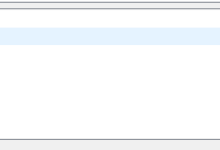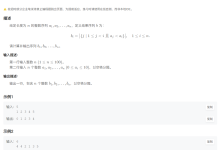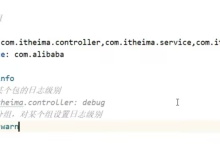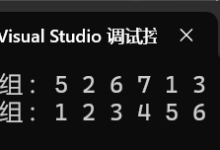第20章 UE5创建自定义图形界面
图形界面是游戏与玩家交互的关键部分,而自定义的图形界面可以让游戏独具特色并提升用户体验。在UE5.2中,开发者可以通过多种方式创建自定义图形界面,既可以使用内置的UI系统,也可以通过外部图形编辑工具创建资源。本章将介绍如何使用不同的图形工具为UE5.2游戏创建独特的图形界面元素。
20.1 创建图形的普遍规则
在创建游戏UI图形资源时,无论使用哪种工具,都有一些通用的最佳实践和规则需要遵循:
分辨率与尺寸:UI元素应考虑不同设备的分辨率,理想情况下使用矢量图形或高分辨率位图。对于位图,建议使用2的幂次方尺寸(如256×256, 512×512等),以优化内存使用和渲染性能。
可扩展性:设计UI元素时应考虑其扩展性,例如使用九宫格(9-slice)技术设计按钮和面板,以便可以不失真地调整大小。
一致性:保持视觉风格的一致性,包括颜色方案、字体、线条粗细等元素。
透明度通道:大多数UI元素需要透明度通道(Alpha Channel),应使用支持透明度的格式如PNG或TGA。
文件格式:根据需求选择适当的文件格式:
- PNG:适合有透明度的UI元素
- TGA:支持高质量透明度和多层
- PSD:保留图层信息,便于后期编辑
- SVG:矢量格式,可无损缩放(需转换为UE支持的格式)
组织结构:合理组织图层和命名,便于团队合作和后期维护。
在UE5.2中导入和使用UI资源的基本流程是:
cpp
// C++中加载UI纹理的示例
#include \”Engine/Texture2D.h\”
UTexture2D* LoadUITexture(const FString& TexturePath)
{
// 同步加载纹理资源
UTexture2D* Texture = Cast<UTexture2D>(StaticLoadObject(UTexture2D::StaticClass(), nullptr, *TexturePath));
if (Texture)
{
// 设置UI纹理的采样模式
Texture->SRGB = true; // 使用sRGB颜色空间
Texture->Filter = TF_Nearest; // 使用最近点采样,保持像素边缘清晰
Texture->AddressX = TA_Clamp; // X方向限制寻址模式
Texture->AddressY = TA_Clamp; // Y方向限制寻址模式
Texture->UpdateResource(); // 更新纹理资源
}
return Texture;
}
在蓝图中使用UI纹理的基本方法:
swift
// 蓝图中加载和设置UI纹理
function SetupUITexture(ImageWidget, TexturePath):
// 加载纹理
UITexture = LoadObject<UTexture2D>(None, TexturePath)
if UITexture:
// 创建动态材质实例以更好地控制渲染属性
DynamicMaterial = CreateDynamicMaterialInstance(ImageWidget.Brush.GetResourceObject())
// 设置纹理参数
DynamicMaterial.SetTextureParameterValue(\”UITexture\”, UITexture)
// 应用到图像组件
ImageWidget.SetBrushFromMaterial(DynamicMaterial)
// 设置渲染属性
ImageWidget.SetDesiredSize(Vector2D(UITexture.GetSurfaceWidth(), UITexture.GetSurfaceHeight()))
return true
return false
接下来,我们将探讨几种常用的图形编辑工具,并了解如何使用它们创建UE5.2的UI资源。
20.2 GIMP
GIMP (GNU Image Manipulation Program) 是一个免费开源的图像编辑软件,提供了强大的图像处理功能,是创建游戏UI资源的优秀选择,特别是对于预算有限的独立开发者。
GIMP的主要优势包括:
- 免费开源
- 跨平台支持(Windows、macOS、Linux)
- 图层支持
- 丰富的滤镜和效果
- 脚本和插件扩展性
- 支持多种文件格式
20.2.1 新建图片
在GIMP中创建适合UE5.2的UI元素,首先需要设置正确的文档属性:
打开GIMP,选择\”文件 > 新建\”或使用快捷键Ctrl+N
在新建对话框中设置以下参数:
- 宽度和高度:选择2的幂次方尺寸,如512×512像素
- 分辨率:通常为72 PPI(网页标准)或96 PPI(Windows标准)
- 颜色空间:RGB颜色
- 背景:选择\”透明\”以创建带有Alpha通道的图像
点击\”确定\”创建新文档
在UE5.2中,可以创建一个辅助类来处理GIMP导出的图像:
cpp
// GIMPTextureImporter.h
#pragma once
#include \”CoreMinimal.h\”
#include \”Kismet/BlueprintFunctionLibrary.h\”
#include \”Engine/Texture2D.h\”
#include \”GIMPTextureImporter.generated.h\”
/**
* 用于处理GIMP导出纹理的功能库
*/
UCLASS()
class MYGAME_API UGIMPTextureImporter : public UBlueprintFunctionLibrary
{
GENERATED_BODY()
public:
/**
* 优化从GIMP导入的UI纹理
* @param Texture 要优化的纹理
* @param bPreservePixelArt 是否保持像素艺术的清晰边缘
* @param bGenerateMips 是否生成mipmap
* @return 优化后的纹理
*/
UFUNCTION(BlueprintCallable, Category = \”UI|Textures\”)
static UTexture2D* OptimizeGIMPTexture(UTexture2D* Texture, bool bPreservePixelArt = true, bool bGenerateMips = false);
/**
* 为GIMP图像创建九宫格纹理
* @param Texture 源纹理
* @param BorderLeft 左边框宽度
* @param BorderTop 上边框宽度
* @param BorderRight 右边框宽度
* @param BorderBottom 下边框宽度
* @return 配置为九宫格的纹理
*/
UFUNCTION(BlueprintCallable, Category = \”UI|Textures\”)
static UTexture2D* CreateNineSliceTexture(UTexture2D* Texture, int32 BorderLeft, int32 BorderTop, int32 BorderRight, int32 BorderBottom);
};
// GIMPTextureImporter.cpp
#include \”GIMPTextureImporter.h\”
UTexture2D* UGIMPTextureImporter::OptimizeGIMPTexture(UTexture2D* Texture, bool bPreservePixelArt, bool bGenerateMips)
{
if (!Texture)
{
return nullptr;
}
// 修改纹理设置以优化UI渲染
Texture->SRGB = true; // 使用sRGB颜色空间以正确显示颜色
// 根据像素艺术选项设置过滤模式
Texture->Filter = bPreservePixelArt ? TF_Nearest : TF_Bilinear;
// 设置纹理寻址模式为限制,避免边缘重复
Texture->AddressX = TA_Clamp;
Texture->AddressY = TA_Clamp;
// 设置mipmap生成
Texture->MipGenSettings = bGenerateMips ? TMGS_FromTextureGroup : TMGS_NoMipmaps;
// 应用更改
Texture->UpdateResource();
return Texture;
}
UTexture2D* UGIMPTextureImporter::CreateNineSliceTexture(UTexture2D* Texture, int32 BorderLeft, int32 BorderTop, int32 BorderRight, int32 BorderBottom)
{
if (!Texture)
{
return nullptr;
}
// 创建一个新的带有九宫格信息的纹理
UTexture2D* NineSliceTexture = DuplicateObject<UTexture2D>(Texture, nullptr);
// 设置九宫格边界值
NineSliceTexture->NineSliceBorder.Left = BorderLeft;
NineSliceTexture->NineSliceBorder.Top = BorderTop;
NineSliceTexture->NineSliceBorder.Right = BorderRight;
NineSliceTexture->NineSliceBorder.Bottom = BorderBottom;
// 标记为使用九宫格
NineSliceTexture->bNineSliceBorderSupport = true;
// 应用更改
NineSliceTexture->UpdateResource();
return NineSliceTexture;
}
20.2.2 添加图形组件
在GIMP中设计UI元素时,合理使用图层和组件可以提高工作效率并保持设计灵活性:
- 使用形状工具创建基本形状(矩形、圆形等)
- 使用画笔和铅笔工具手绘元素
- 使用渐变工具创建平滑过渡效果
- 使用文字工具添加文本元素
对于游戏UI,通常需要创建这些组件:
- 按钮(正常、悬停、按下、禁用状态)
- 面板背景
- 图标
- 进度条
- 框架和装饰元素
在UE5.2中,可以使用这些组件创建完整的UI:
cpp
// UIComponentLibrary.h
#pragma once
#include \”CoreMinimal.h\”
#include \”Kismet/BlueprintFunctionLibrary.h\”
#include \”Engine/Texture2D.h\”
#include \”Components/Button.h\”
#include \”Components/Image.h\”
#include \”Components/ProgressBar.h\”
#include \”UIComponentLibrary.generated.h\”
/**
* UI组件库,用于创建基于GIMP图像的UI元素
*/
UCLASS()
class MYGAME_API UUIComponentLibrary : public UBlueprintFunctionLibrary
{
GENERATED_BODY()
public:
/**
* 使用GIMP创建的图像设置按钮状态
* @param Button 要设置的按钮
* @param NormalTexture 正常状态纹理
* @param HoveredTexture 悬停状态纹理
* @param PressedTexture 按下状态纹理
* @param DisabledTexture 禁用状态纹理
*/
UFUNCTION(BlueprintCallable, Category = \”UI|Components\”)
static void SetupButtonWithGIMPTextures(UButton* Button, UTexture2D* NormalTexture, UTexture2D* HoveredTexture,
UTexture2D* PressedTexture, UTexture2D* DisabledTexture);
/**
* 创建自定义进度条
* @param ProgressBar 要设置的进度条
* @param BackgroundTexture 背景纹理
* @param FillTexture 填充纹理
* @param FillColorOverride 填充颜色覆盖
*/
UFUNCTION(BlueprintCallable, Category = \”UI|Components\”)
static void SetupCustomProgressBar(UProgressBar* ProgressBar, UTexture2D* BackgroundTexture, UTexture2D* FillTexture,
const FLinearColor& FillColorOverride);
};
// UIComponentLibrary.cpp
#include \”UIComponentLibrary.h\”
#include \”Materials/MaterialInstanceDynamic.h\”
void UUIComponentLibrary::SetupButtonWithGIMPTextures(UButton* Button, UTexture2D* NormalTexture, UTexture2D* HoveredTexture,
UTexture2D* PressedTexture, UTexture2D* DisabledTexture)
{
if (!Button)
{
return;
}
// 设置按钮样式
FButtonStyle ButtonStyle = Button->GetStyle();
// 设置不同状态的图像
if (NormalTexture)
{
FSlateBrush NormalBrush;
NormalBrush.SetResourceObject(NormalTexture);
NormalBrush.ImageSize = FVector2D(NormalTexture->GetSurfaceWidth(), NormalTexture->GetSurfaceHeight());
ButtonStyle.Normal = NormalBrush;
}
if (HoveredTexture)
{
FSlateBrush HoveredBrush;
HoveredBrush.SetResourceObject(HoveredTexture);
HoveredBrush.ImageSize = FVector2D(HoveredTexture->GetSurfaceWidth(), HoveredTexture->GetSurfaceHeight());
ButtonStyle.Hovered = HoveredBrush;
}
if (PressedTexture)
{
FSlateBrush PressedBrush;
PressedBrush.SetResourceObject(PressedTexture);
PressedBrush.ImageSize = FVector2D(PressedTexture->GetSurfaceWidth(), PressedTexture->GetSurfaceHeight());
ButtonStyle.Pressed = PressedBrush;
}
if (DisabledTexture)
{
FSlateBrush DisabledBrush;
DisabledBrush.Set
 网硕互联帮助中心
网硕互联帮助中心




![[TG开发]简单的回声机器人-网硕互联帮助中心](https://www.wsisp.com/helps/wp-content/uploads/2025/08/20250816114512-68a06f48800c8-220x150.png)

评论前必须登录!
注册